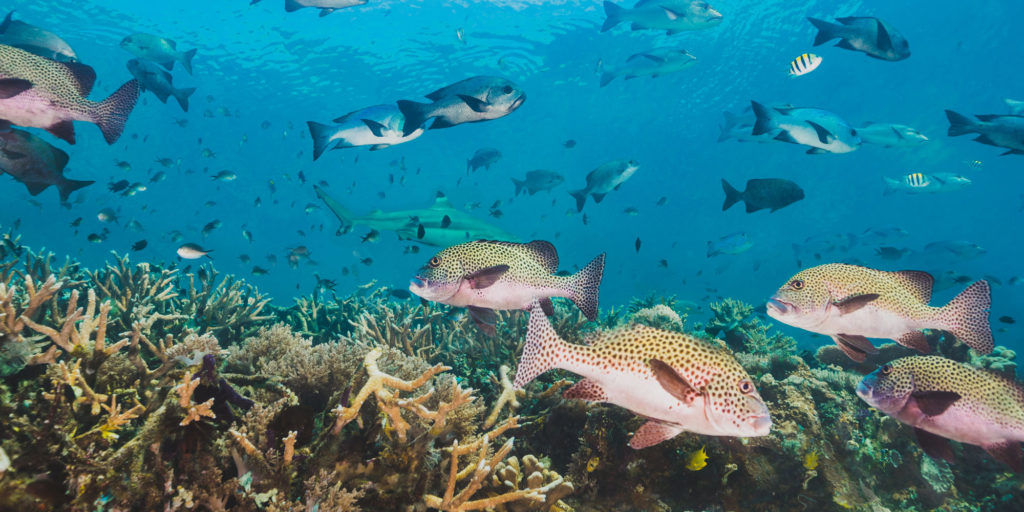Fishmeal is an important feed product made from bones and offal left over from fish processing industries. The industries rearing finfish and crustaceans and other fish species is based upon the marine capture fisheries to supply key nutrient inputs including fishmeal.
More than 70% of fishmeal produced from harvest of small, open-ocean (pelagic) fish such as anchovies, herring, menhaden, capelin, anchovy, pilchard, sardines and mackerel. All these fish have small life cycles and are capable of rapid reproduction. The remaining 30% of fishmeal is generated from the left over scrapes in the fish processing industry by fish meal producers.
Seafood based industry where fishmeal is used are:
- Fish farming: raising of fish for food purposes at commercial level.
- Shrimp farming: cultivation of shrimps commercially.
- Oyster farming: cultivation of oysters for shell, food and pearl purpose.
- Mari culture: cultivation of marine organisms in the Open Ocean, in tanks or ponds.
- Ornamental fish farming: rearing specific fish species for ornamental beauty.
- The most important reason for the use of fishmeal in the fish industry is the remarkable features of fishmeal including well-balanced amino acids, essential fatty acids, energy contents, minerals and vitamins presence, high digestibility and palatability.
History
The earliest farming of fish dates back to before 1000 BCE in China. Carp was considered a symbol of good luck in china. With the increase in the human population, the demand for seafood (wild, farmed, fresh, processed and frozen) also. The supply of fish from pelagic fisheries has been constant over the past twenty years; that is 6 million metric ton by fish meal manufacturers. The reason is that pelagic fish has great potential for rapid reproduction. However, there came a dramatic increase in prices of both fishmeal and fish oil due to which fish meal exporters may look for alternate options.
Benefits
- Fishmeal is a well-balanced source of high quality proteins, it poses a great effect on growth and development of healthy fish. The same for the seafood is so good for humans.
- A good quality fishmeal contains 60%-72% crude proteins. Proteins contain amino acids which are released for absorption during digestion. The amino acids that cannot be made in the animal body are provided by fishmeal. This is the reason (amino acid profile) what makes it a perfect protein supplement.
- Fishmeal proved to be highly effective in fast growth because of its highly digestible features. On the other hand the plant based feeds are about 25% less. As a result, depressed growth rates and feed intake is observed.
- Lipid content in fishmeal (4%-20%) is highly digestible and a great source of polyunsaturated fatty acids (PUFA) both in omega-3 and omega-6 families of fatty acids. These fatty acids are important in formation of cell membranes which is a semi permeable membrane. Fatty acids help cells to maintain fluidity in varied temperature levels. Cell membranes provide cushioning effects from dramatic pressure that fish encounter at varying depths of the water column.
- Lipids in fishmeal are easily digestible and in fish and shrimps, the digestibility percentage is 90%. As a result, a major portion of fishmeal is being taken up by the animals and a little goes into waste.
- Fishmeal is also an excellent source of energy. The energy contents in fishmeal depends directly upon the proteins and oil in it. It is also composed of antioxidants which protect piles of fishmeal from combustion.
- Fishmeal of good quality contains 17%-25% ash contents. More ash contents mean more amounts of minerals and vitamins. Vitamins are very essential in proper balanced growth and development. Moderately rich source of vitamins of the B-complex especially cobalamins (B12), niacin, choline, pantothenic acid, and riboflavin.
- The important aim in feed formulation is to supply a balanced amount of amino acids to help in fast reproduction, increase dietary nutrient density and to impart natural or wholesome characteristics to the final product, such as that provided by wild fish.

